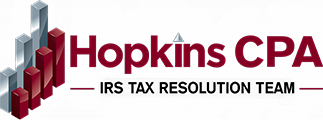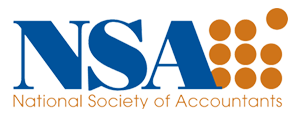Are you aware that the amount of money average workers receive from Social Security after Medicare premiums has dropped to just about 29% of their pre-retirement earnings, down from 40% two decades ago? What’s more alarming is that in less than four years, Social Security expenses are expected to surpass its revenues. This deficit could deplete the Social Security Trust Fund by 2034, potentially resulting in further benefit reductions.
These concerning trends highlight the urgent need for proactive retirement planning. A secure and comfortable retirement is a dream that every person has. Nowadays, we are living longer and healthier lives, which means that we can expect to spend more time in retirement than our parents and grandparents did. Planning your finances accordingly is the key to achieving the dream of a secure and comfortable retirement. Our blog is dedicated to helping you achieve this dream.
At Hopkins CPA Firm, we also offer comprehensive tax preparation services for individuals and businesses in Texas and beyond. We guide you through the available options, like an offer in compromise with the IRS, innocent spouse relief with the IRS, penalty abatement with the IRS, and filing payroll tax returns, ensuring that every financial decision aligns with your broader financial health.
What is Retirement Planning?
Retirement planning is about figuring out how much money you’ll need when you stop working and what you need to do to get there. It involves looking at how much money you’ll have coming in, how much you’ll probably spend, setting up a savings plan, and managing your investments and risks.
To plan for a secure retirement, it’s important to determine your retirement costs by making a budget that includes all expected expenses. Let’s get to know them.
Estimating Retirement Expenses
It’s important that the money you get each year when you retire is enough to cover what you’ll spend. Figuring out all your possible retirement costs is a key part of planning for retirement, but it can be tricky to think of everything you might need to pay for, especially if retirement is a long way away. To help you start planning, here’s a list of typical costs you might have in retirement:
- Food and Clothing
- Home Costs
- Utility Bills
- Taxes
- Debt Payments
- Education Costs
- Gifts
- Savings and Investments
- Fun Activities
- Healthcare Expenses
- Long-term Care
- Insurance Premiums
- Emergency Fund
- Transportation Costs
- Home Maintenance and Repairs
- Charity and Philanthropic
- Personal Care
- Membership Fees and Subscriptions
Understanding how your spending may shift as you age will help in creating a more accurate retirement plan:
Typically, households under the age of 55 spend about $64,798 annually, necessitating aggressive savings. In early retirement (ages 55-64), spending may rise to $70,039, often due to increased leisure activities. Between ages 65-74, expenses typically reduce to $56,374 as lifestyles stabilize, and further decrease to $49,807 after age 75 due to reduced mobility and a more sedentary lifestyle.
With a clear idea of the potential retirement expenses and the spending habits laid out, it’s essential to recognize why early planning is necessary. It prepares you financially and provides peace of mind as you approach your retirement years.
The Importance of Early Planning for a Financially Secure Retirement
Planning early for retirement is important. It helps you deal with healthcare costs, enjoy a stress-free retirement, and tackle unforeseen expenses comfortably. Starting savings early is advantageous for your long-term financial stability.
- Prepare for rising healthcare costs: With healthcare costs increasing, it’s wise to plan for these expenses, especially since the average American now lives into their late 70s and the retirement age is 67 for those born in 1960 or later. Early savings can ensure coverage for a decade or more of healthcare needs.
- Enjoy your free time: Retirement should be enjoyable, filled with hobbies and activities like gardening or traveling. Starting to save early ensures you can cover expenses such as tools and tickets, making your retirement as fulfilling as possible.
- Handle unexpected costs: Having a substantial savings cushion is essential to managing unexpected expenses, such as medical emergencies or natural disasters. This prevents the need to return to work and helps maintain your retirement lifestyle.
- Achieve financial security: Starting your savings early builds a solid financial base, providing stability and peace of mind. By beginning early, you accumulate more, ensuring you can cover both basic needs and retirement dreams.
- Leverage the power of compound interest: Early savings maximize compound interest benefits, where your money earns more over time. For example, beginning at age 22 and saving $475 a month could result in a retirement fund of over $2 million by age 67.
- Reduce your taxes: Contributing to retirement accounts like a 401(k) or traditional IRA can reduce your taxable income now. The taxes on these contributions are deferred until withdrawal, which is often at a lower tax rate. Roth IRAs offer tax-free withdrawals, which enhance the growth of your investments.
After learning about the importance of early planning for a financially secure retirement, it’s important to figure out how to save the right amount of money during our 30s, 40s, and 50s. Knowing what costs you might face, you can make a solid plan to save money at every point in your working life.
How to Save for Retirement at Different Ages?
Planning for retirement should begin early in one’s career, even as early as the 30s. The given below section will provide detailed retirement planning through successive decades—the 30s, 40s, and 50s—highlighting the importance of a long-term investment strategy.
How to save for retirement at 30?
In your 30s, establishing a solid foundation for retirement is essential. This stage is the perfect time to set the groundwork for a secure financial future. Start saving early to leverage the benefits of compound interest, making the most of tax-advantaged retirement accounts like 401(k)s. Aim to set aside a portion of your income regularly, even if it’s starting small, and gradually increase your savings rate as your earnings grow. It’s also wise to begin understanding different investment options and planning for future healthcare needs.
As we move into our 40s, it’s time to refine and adjust our strategies to ensure our retirement plan remains on track.
How to save for retirement at 40?
As you enter your 40s, it’s essential to reassess and enhance your retirement strategy. This decade is a critical time for making adjustments that will secure your financial comfort later on. Review and possibly increase your retirement contributions, especially if your financial situation has improved. Diversify your investments to include a broad range of assets and consider your family’s future needs by saving for education and updating your insurance coverage. It’s also important to continue managing debt efficiently and refine your budget to support increased savings.”
Now, as you approach the 50s, it’s time to focus on final preparations for retirement, ensuring all plans are fine-tuned and ready.
How to save for retirement at 50?
As you enter your 50s, the focus shifts to finalizing preparations for retirement. This decade is all about cementing your plans and ensuring you are ready to enjoy your retirement years fully.
Focus on maximizing retirement contributions, including making catch-up contributions if you’re over 50—currently allowed up to an additional $1,000 annually, increasing the total limit to $8,000 for IRAs. It’s time to finalize your retirement planning by assessing Social Security benefits, considering healthcare strategies, and planning to pay off major debts like your mortgage. Shift toward more conservative investments to protect your nest egg as you approach retirement.”
Make Final Financial Adjustments: Fine-tune your financial plans to ensure you are fully prepared for retirement.
Retirement Savings Goals
Setting clear retirement goals is vital for ensuring a financially secure and fulfilling future. By establishing these goals, you create a plan of action that guides your financial decisions and helps you prepare for life after work. Here are some key steps to follow:
- Determine your retirement savings goals by age: Choose when you wish to retire to establish the timeline for your savings and investment strategy.
- Estimate retirement expenses: Consider your annual spending needs during retirement, including housing, healthcare, hobbies, and travel, adjusting for inflation.
- Calculate income sources: Identify all potential sources of retirement income, including Social Security, pensions, and part-time work, to understand the savings needed to fill any gaps.
- Assess your financial situation: Review your current savings, investments, and debts to gauge your financial preparedness and make necessary adjustments.
- Choose an investment strategy: Select an investment approach that matches your risk tolerance and retirement timeline, using assets like stocks and bonds to grow your funds.
- Create a budget: Develop a budget to manage your income and expenses, enhancing your ability to save for retirement. Adjust this budget as your financial situation evolves.
- Maximize retirement contributions: Fully use retirement accounts such as 401(k)s or IRAs, aiming to contribute the maximum allowable and securing any employer matches.
- Plan for healthcare: Prepare for potential healthcare needs and associated costs by ensuring you have adequate insurance and savings for retirement medical expenses.
Following these steps, you can systematically approach retirement planning and set yourself up for a stable and rewarding retirement. It’s about balancing current needs with future desires and adjusting your plans as your life and the economy change.
How to Save for Retirement?
When it comes to planning for retirement, many Americans are not well-prepared. A report by the U.S. Government Accountability Office found that almost half of households led by someone 55 or older had no retirement savings.
Many people may not have enough money to live comfortably in retirement and might have to rely only on Social Security for their living expenses. However, your retirement doesn’t have to be like this.
Here’s what you need to know about the best types of retirement plans available and how to choose the right one for you
Individual Retirement Plans
Not everyone can get a retirement plan from their workplace. And sometimes, even if you do, like with a 401(k), you might want to save more money than what the plan lets you put in each year. In these situations, the best way to save more for retirement on your own is through Individual Retirement Accounts (IRAs). This includes:
Traditional Individual Retirement Account (IRA)
- Who should consider it: Ideal for people who want to save some money for when they stop working, either on their own or in addition to any other retirement plans they might have.
- Who can have one: Anyone who’s earning a salary or wages and paying taxes can open and contribute to a traditional IRA.
- Contribution limit: For 2024, the limit is $7,000 if you’re under age 50. For those aged 50 and over, there’s an additional catch-up contribution of $1,000, making the total limit $8,000.
- What’s great about it:
- The money you put into a traditional IRA might lower your taxable income now, which could mean paying less in taxes this year.
- The earnings on your investments within a traditional IRA aren’t taxed year by year. Instead, you’ll pay taxes on the money when you withdraw it during retirement, possibly at a lower tax rate.
Roth IRA
- Who should consider it: It is best for those who prefer not to pay taxes on their retirement savings when they withdraw the money during their retirement.
- Who can have one: It’s available to individuals with taxable income under a certain limit, which is $144,000 for single filers or $214,000 for those married and filing jointly.
- Contribution limit: For 2024, the limit is $7,000 under age 50. The catch-up contribution limit for individuals aged 50 and over remains $1,000, so the total is $8,000 for that age group in 2024.
- What’s great about it:
- Money taken out of a Roth IRA during retirement is tax-free, which includes both your contributions and the earnings you’ve made.
- You can also take out the money you’ve put in (your contributions) at any time, without a tax penalty, giving you some financial flexibility if you need cash before retirement.
These options offer a range of ways to save for retirement, whether you’re looking for tax benefits now or tax-free income later, or if you’re part of a single or dual-income household. It’s important to choose a plan that fits with your current financial situation, your tax outlook, and your retirement goals and explains what retirement looks like.
Employer-Sponsored Retirement Plan
If there’s a retirement savings plan available at your job, it’s a smart move to sign up for it. These plans can give your retirement savings milestones a big boost. The kind of job you have will determine the retirement plan options available to you.
Traditional 401(k) Plans
- Who should consider it:: People working at businesses that aim to make profits.
- Who can have one: Workers whom the company qualifies can join, based on certain government standards.
- Contribution limit: For 2024 has been increased to $23,000. The catch-up contribution limit for those aged 50 and over remains at $7,500, making the total limit $30,500 for that age group.
- What’s great about it:
- The money you put into the plan doesn’t get taxed right away, which can lower your tax bill now.
- The money you make from your investments isn’t taxed year by year. You’ll pay taxes on it when you retire and start taking money out.
- Often, employers will match a portion of your contributions, which is like getting free money to help your retirement savings grow faster.
Roth 401(k) Plans
- Who should consider it: Workers at for-profit companies who would rather pay taxes on their retirement savings now than later.
- Who can have one: Similar to a traditional 401(k), it’s for employees the company picks based on federal guidelines.
- Contribution limit: As with the traditional 401(k), the contribution limit is $23,000 in 2024, with a catch-up contribution of $7,500 for those aged 50 and over, totaling $30,500.
- What’s great about it:
- The earnings on your investment and what you withdraw when you retire won’t be taxed.
- This means you can enjoy your retirement savings without worrying about future taxes.
- Like the traditional 401(k), employers might match your contributions, increasing your retirement savings by age.
Why should you Review your Retirement Plan every year?
Life is unpredictable, and changes can happen at any time. That’s why it’s essential to review your retirement plan every year. This regular check ensures your plan stays aligned with your current life situation and future goals.
- Life Changes
Changes in your life can significantly influence your retirement planning. Job transitions may require decisions about previous retirement accounts, while a salary increase offers an opportunity to enhance your retirement savings by age. Significant family events like births, children leaving home, or divorces necessitate financial adjustments.
Moreover, experiencing loss or becoming a caregiver can profoundly impact your financial needs and plans, prompting a reassessment of your retirement strategy. - Beneficiaries
Your retirement assets need a beneficiary who will inherit them. Update your designated beneficiaries after major life changes to ensure your assets are passed on as intended. This includes updating wills, retirement accounts, property deeds, insurance policies, and trusts.
Regularly reviewing your beneficiaries ensures your assets will go to the right people. - Lifestyle Choices
As you age, your ideas about retirement might change, which could affect how much money you’ll need. Health changes could modify your lifestyle needs, moving to a new location might be desirable, and new hobbies could affect your financial plans.
It’s good to review your retirement vision each year to adjust plans based on new desires or circumstances. - Financial Changes
Financial situations can vary year by year. Regular reviews help you adjust your plan to stay on track. Ensure you’re maximizing contributions to retirement accounts, reviewing your planned retirement age and savings goals, checking investment fees, and reassessing your insurance coverage to stay aligned with your needs. - Account Access
In the digital age, keeping track of all your account logins is crucial. Log into your retirement accounts at least once a year to update your passwords and check on your investments. Regular updates help prevent fraud and ensure you have access when you need it.
Summing Up!
Before you decide when to start taking your Social Security benefits for retirement planning, consider the pros and cons. The main advantage of starting early, before your full retirement age, is that you receive benefits for a longer period of time. However, the downside is that your monthly benefits will be reduced.
Every individual’s situation is different, but here are some important points to remember:
If you wait until after your full retirement age to begin collecting benefits, you can earn delayed retirement credits that increase your monthly payments.
There are other factors to consider when deciding the best time to start receiving retirement benefits, like whether you are still working. What is your life expectancy? Will you still have health insurance?
Even if you choose to delay receiving benefits past the age of 65, you can contact us within three months of turning 65. If you enroll later, we can also help you resolve your issue and plan a retirement that will be both financially and peacefully satisfying.









